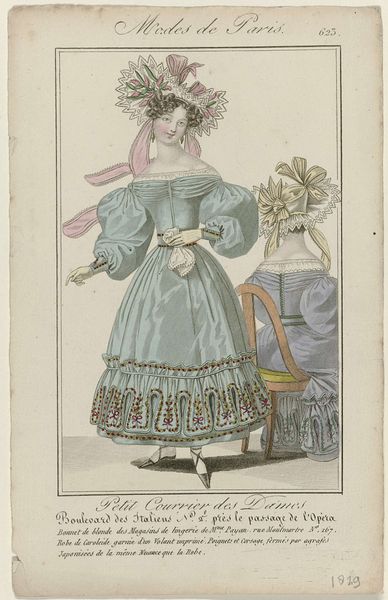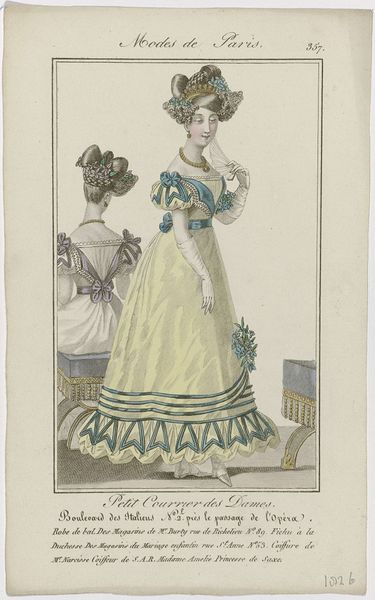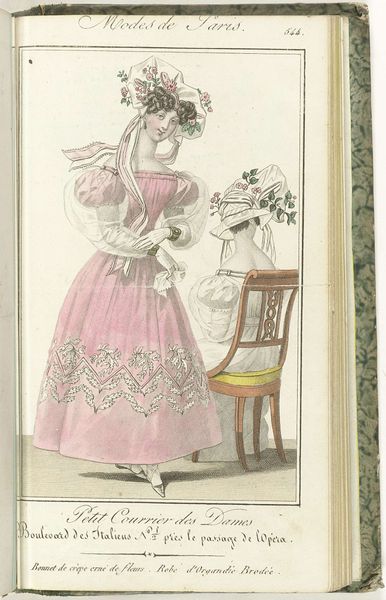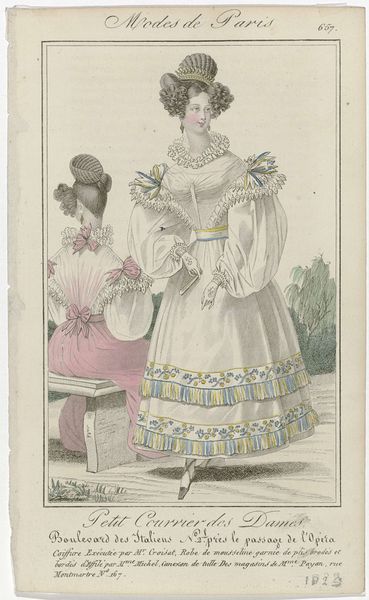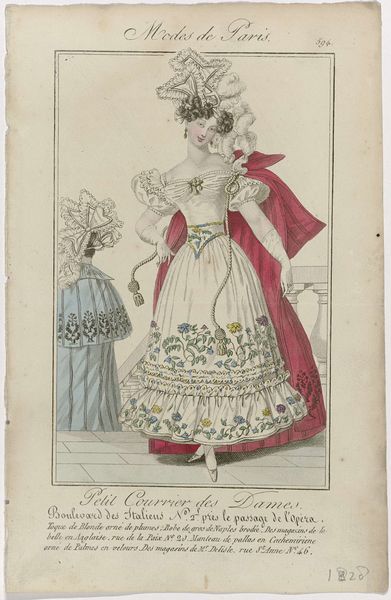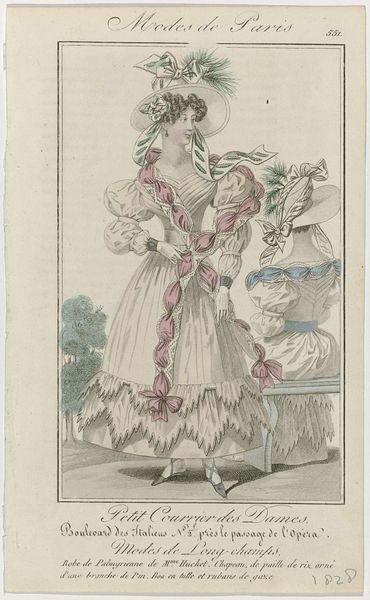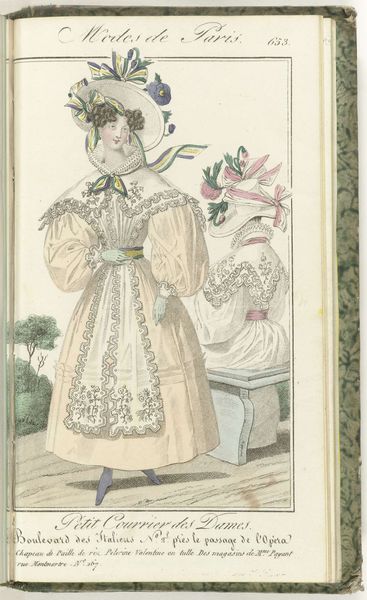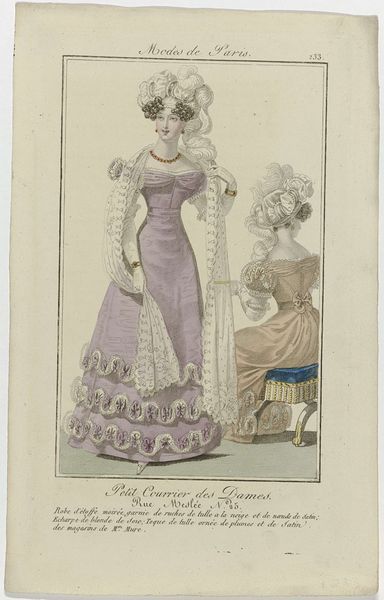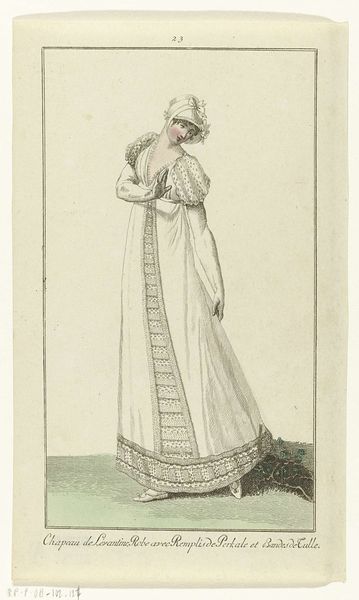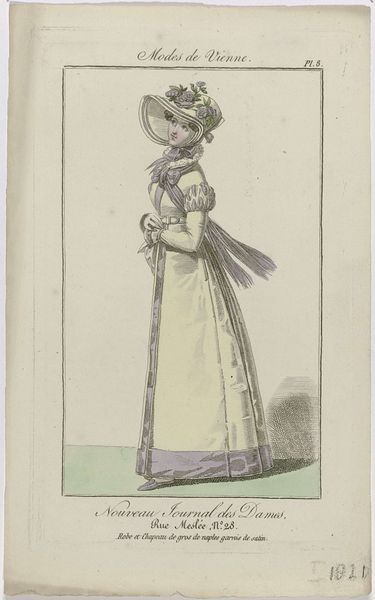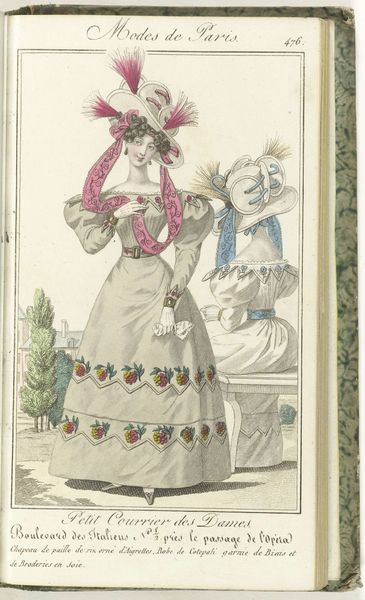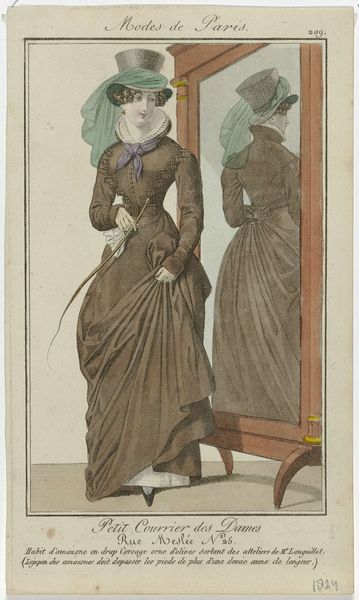
# print
#
figuration
#
romanticism
#
genre-painting
#
decorative-art
#
dress
Dimensions: height 196 mm, width 118 mm
Copyright: Rijks Museum: Open Domain
Editor: We're looking at "Nouveau Journal des Dames," Plate 9, from 1821. It's an anonymous print showcasing a woman in a beautiful dress. It feels very proper, almost restrained. How do you interpret this work within its historical context? Curator: This image is deeply embedded in the burgeoning fashion press of the 19th century, representing not just a dress but a lifestyle and aspiration. It’s a public declaration of taste and economic status. Think about the "Journal des Dames" itself—who was it for, and what messages did it convey about women’s roles? Editor: I guess it’s aimed at upper-class women. The focus is entirely on appearance and staying up to date. Is that kind of objectification the main purpose, or could it be about artistic expression, too? Curator: Both, I think. On one level, absolutely, these publications served the developing consumer culture, dictating trends and reinforcing social hierarchies. But they also reflect artistic sensibilities of the Romantic era: the delicate lines, the focus on the individual. Fashion was, and is, a potent form of visual communication. What does the dress itself communicate? Editor: It seems delicate but elaborate at the same time. Almost like showing wealth without being too over the top. Curator: Precisely! It whispers wealth and sophistication to a very specific audience, a key part of what Historians refer to as symbolic capital. Understanding such images unlocks insights into the social dynamics of the time. Editor: That’s a side of fashion I never really thought about. Thanks. It all becomes much more layered and meaningful now. Curator: Absolutely, seeing art in its socio-political sphere transforms our comprehension of not only its aesthetic value, but also it's cultural role.
Comments
No comments
Be the first to comment and join the conversation on the ultimate creative platform.

